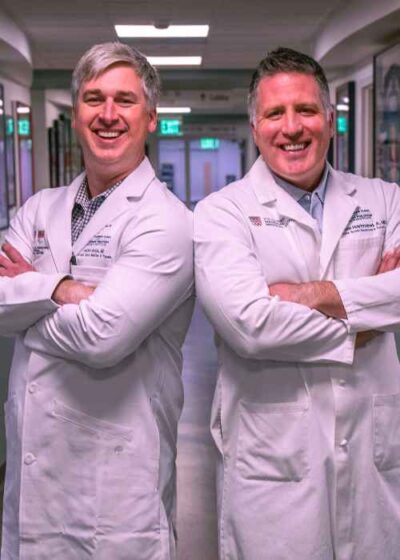Complex Foot Specialists
Do you have a family history of hallux rigidus? Hallux rigidus is a condition of the big toe caused by chronic overuse, injury to the toe, or genetics. This condition can result in pain, swelling, and decreased motor function of the big toe. Severe cases of hallux rigidus may require surgery to alleviate pain and increase mobility. Complex foot specialists, Doctors Thomas Haytmanek and Jonathon Backus can help patients in Vail, Aspen, and the surrounding Denver, Colorado communities who believe they may be experiencing symptoms caused by hallux rigidus. Contact The Steadman Clinic’s Sports Foot and Ankle team today!

What is Hallux Rigidus?
Hallux rigidus is a progressively painful condition of the big toe that is generally a “wear and tear” phenomenon. Hallux is Latin for big toe while rigidus means “stiff”. It is sometimes referred to as hallux limitus. This condition primarily occurs from chronic overuse and in some cases can be related to a specific injury. Genetics can also play a role.
What are symptoms of hallux rigidus?
Symptoms of hallux rigidus include a dull, aching pain, and decreased movement of the big toe. This can lead to difficulty with shoe wear, walking or standing for periods of time. Over time limping can create pain in other areas of the foot, or even other joints, as they see more stress.
How is hallux rigidus diagnosed?
Our physicians will perform an extensive evaluation including x-rays of the foot. X-rays will generally show decrease space within the big toe joint (MTP) as well as bone spurs around the joint. Usually, this is enough to properly guide treatment, but some cases require advanced imaging such as MRI or CT.
Does hallux rigidus require surgery?
Patients who have mild cases of hallux rigidus can be treated conservatively. Conservative treatment includes activity modification, shoe modifications, insoles or orthotic devices, anti-inflammatory medications or steroid injections.
What are the surgical treatment options for hallux rigidus?
In severe cases of hallux rigidus where persistent pain and loss of function persists, surgery may be the best option. Our orthopaedic surgeons offer several surgical approaches that can improve this condition. For some patients, an arthroscopic debridement of the joint can alleviate pain. With a small incision, a cheilectomy is another procedure that is used to remove bone spurs around the big toe joint. This helps preserve the joint and often decreases pain and improves mobility. In patients who have significantly reduced joint space, a synthetic cartilage implant may be an option. For patients who have severe motion limitation and degenerative changes in the joint, a fusion of the joint may be needed.
What happens after hallux rigidus surgery?
Post-operative recovery following surgery for hallux rigidus will depend on the surgery that was performed. Instructions on how to begin mobility of the joint will occur soon after surgery. Some patients are allowed to weight bear immediately in a hard sole (postoperative) shoe. It is essential that patients follow the post-operative protocol for recovery as set forth by our surgeons since this is a crucial part of the healing process.